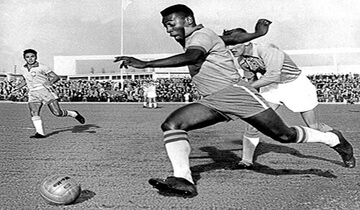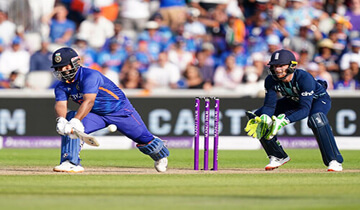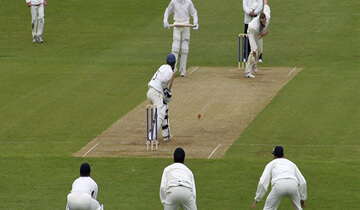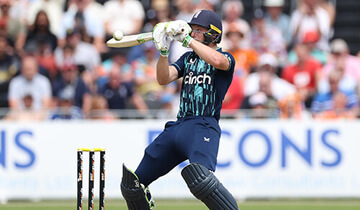Definition of strike rate and its importance as a key statistic in cricket
Strike rate is a key statistic used in cricket to measure batting and bowling performances. It measures the ratio of runs scored per balls faced for batsmen, and runs conceded per balls bowled for bowlers. A higher strike rate generally indicates better performance for batsmen, while a lower strike rate is better for bowlers.
Strike rate became an important metric after the advent of One Day International (ODI) cricket around 50 years ago, when the format introduced a limited number of overs per innings. Strike rate measures how quickly batsmen can score runs given a limited number of balls to face. For bowling, it indicates how economically bowlers can restrict scoring by the opposition. Strike rate allows comparisons of performances across different eras of ODI and T20 cricket.
Brief background on when strike rate became a tracked metric in cricket
Strike rate did not matter in Test cricket historically as there were no limits on overs batted by teams. But when ODI cricket began in 1971 with a stipulated number of overs per innings, strike rate emerged as an important measure of batting effectiveness. Batsmen now had to score runs quickly given the limited number of balls.
Later, the faster-paced T20 format beginning in early 2000s increased the significance of strike rates further. Aggressive batting with strike rates of 120 or above became the norm in T20. For bowlers, keeping economy rates below 8-9 runs per over became paramount. As a result, strike rate is now ubiquitous in discussions of performances in limited overs cricket. It allows fans to compare players across eras to judge attacking batting or disciplined bowling.
Batting Strike Rate
What is Batting Strike Rate?
Batting strike rate is a metric used to measure how aggressively and quickly a batsman scores runs. It is calculated by dividing the number of runs scored by the number of balls faced, and multiplying the result by 100. For example, if a batsman scores 50 runs in 25 balls, their strike rate would be 200 (50 runs divided by 25 balls multiplied by 100).
The strike rate statistic indicates the average number of runs scored per 100 balls faced by the batsman. A batsman with a higher strike rate is generally considered an attacking, aggressive player. On the other hand, a batsman with a lower strike rate usually indicates a more defensive approach and accumulates runs at a slower pace.
How to Calculate Batting Strike Rate
The formula to calculate batting strike rate is straightforward:
Batting Strike Rate = (Runs Scored/Balls Faced) x 100
For example:
-
Player A scores 80 runs in 40 balls.
- Strike Rate = (80/40) x 100 = 200
-
Player B scores 50 runs in 100 balls.
- Strike Rate = (50/100) x 100 = 50
So in the examples above, Player A has a much more attacking approach with a strike rate of 200, while Player B has been more defensive with a strike rate of just 50.
Importance of Strike Rate in ODI and T20 Cricket
Batting strike rate is an especially important statistic in the shorter formats of ODI and T20 cricket. Due to the limited number of overs in an innings, a higher strike rate is crucial for a team to set or chase down large targets.
In ODI cricket, par scores these days are around 300 runs. For a team to have any chance of setting or chasing such a total, most of the batters need to maintain a minimum strike rate of around 80-90. Those who can score at over 100 or more are highly valued.
In T20 cricket, where innings last just 20 overs, strike rates become even more vital. Par scores are around 160-180, so for a team to reach such totals, a strike rate of 120 or more is required from most batters in the line-up. The elite T20 batsmen maintain strike rates in the 140-160 range consistently.
Highest Career Strike Rates in ODI Cricket
Here are some of the batsmen with the highest career strike rates in ODI cricket (minimum 1000 runs):
- Shahid Afridi (Pakistan): 117.00
- Glenn Maxwell (Australia): 116.82
- Thisara Perera (Sri Lanka): 114.67
- AB de Villiers (South Africa): 101.09
- Jos Buttler (England): 118.26
- Virender Sehwag (India): 104.33
- Chris Gayle (West Indies): 87.25
Afridi tops the list due to his incredibly aggressive batting approach through his career, having smashed over 500 sixes in ODIs. Maxwell and Perera are also renowned as hard-hitters. AB de Villiers, Buttler and Sehwag feature highly as they were capable of scoring very quickly despite playing longer innings as well. Gayle, the legendary Windies opener, also boasts an excellent strike rate.
Highest Career Strike Rates in T20Is
Here are some of the leading strike rates in T20I career records (minimum 500 runs):
- Glenn Maxwell (Australia): 159.57
- Thisara Perera (Sri Lanka): 143.84
- Aaron Finch (Australia): 140.29
- Colin Munro (New Zealand): 138.22
- Shahid Afridi (Pakistan): 136.89
- Yuvraj Singh (India): 136.38
- Jos Buttler (England): 136.37
Maxwell tops the list by a huge margin thanks to his destructive abilities to clear the ropes consistently. Thisara Perera and Finch are also exceptionally powerful hitters. Munro, Afridi, Yuvraj and Buttler makeup the rest of an elite group who excel at scoring briskly in the 20 over format.
In summary, batting strike rate is a key metric in limited overs cricket that measures a batter’s scoring rate by runs per 100 balls. It is an indicator of the aggressiveness of a player’s batting style. Strike rates and scoring tempo become increasingly important in ODIs and especially T20s due to the a limited number of overs. Players like Afridi, Maxwell, Buttler, de Villiers, Sehwag, Gayle and Yuvraj have boasted some of the highest career strike rates across formats. A high strike rate is now an essential attribute for batsmen in white ball cricket.
Bowling Strike Rate
Definition of Bowling Strike Rate
Bowling strike rate is a key statistic used to measure the effectiveness of bowlers in the game of cricket. It refers to the average number of balls bowled by a bowler per wicket taken. A lower bowling strike rate is better because it indicates the bowler is taking wickets more frequently and economically.
The bowling strike rate provides insight into how often a bowler is able to take a wicket. A bowler who takes a wicket every 10 balls has a better strike rate than a bowler who takes a wicket every 20 balls. The lower the bowling strike rate, the more penetration and wicket-taking ability the bowler possesses.
Calculating Bowling Strike Rate
The bowling strike rate is calculated by dividing the number of balls bowled by the number of wickets taken.
Bowling Strike Rate = Balls Bowled / Wickets Taken
For example, if a bowler has bowled 480 balls and taken 24 wickets, their bowling strike rate is calculated as:
Bowling Strike Rate = 480 balls / 24 wickets = 20
This indicates that the bowler has taken a wicket every 20 balls on average. The lower this number, the better the bowling strike rate.
Understanding Good Bowling Strike Rates
What constitutes a good bowling strike rate can vary across formats and eras in cricket. In Test cricket, a strike rate below 50 is considered excellent as tests have more batting-friendly conditions. In ODIs, strike rates between 20-30 are very good as ODIs have shorter innings. In T20s which have only 120 balls per innings, strike rates below 15 are seen as excellent.
The benchmark strike rates for bowlers in different formats are:
- Tests: Below 50 is good, below 40 is excellent
- ODIs: Below 30 is good, below 25 is excellent
- T20s: Below 18 is good, below 15 is excellent
However, these benchmarks need to be adapted when comparing strike rates across eras. With improving batsman-friendly playing conditions over the decades, it has become harder for bowlers to maintain very low strike rates compared to earlier eras.
Top Career Bowling Strike Rates in Test Cricket
Here are some of the best career bowling strike rates in the history of Test cricket:
- George Lohmann (England) - Strike Rate of 34.1 - Best strike rate in Tests for over 100 wickets
- Sid Barnes (England) - Strike Rate of 37.0
- Sydney Barnes (England) - Strike Rate of 41.6
- Dale Steyn (South Africa) - Strike Rate of 42.3 - Best record in modern Test era
- Waqar Younis (Pakistan) - Strike Rate of 43.4
- Curtly Ambrose (West Indies) - Strike Rate of 45.9
- Glenn McGrath (Australia) - Strike Rate of 51.9
The top strike rates belonged to early English fast bowlers like Lohmann and Barnes who played in the 19th century when pitches more strongly favored bowlers. Among modern era bowlers, Steyn, Waqar, Ambrose and McGrath stand out for maintaining excellent strike rates below 50.
Career Strike Rates of Other Notable Bowlers
Here are some other leading strike rates in Test cricket history:
- Wasim Akram (Pakistan) - Strike Rate of 54
- Richard Hadlee (New Zealand) - Strike Rate of 50.8
- Malcolm Marshall (West Indies) - Strike Rate of 46.7
- Dennis Lillee (Australia) - Strike Rate of 56.1
- Harbhajan Singh (India) - Strike Rate 68.5
- Muttiah Muralitharan (Sri Lanka) - Strike Rate 55.0
- Shane Warne (Australia) - Strike Rate of 57.4
The above bowlers are all-time greats in Test cricket, although mostly having slightly higher strike rates between 50-60. Muralitharan and Harbhajan have higher rates due to playing many Tests on spin-friendly South Asian pitches.
Current Bowlers with Lowest Test Strike Rates
Among current Test bowlers, some of the lowest career strike rates are:
- Kagiso Rabada (South Africa) - Strike Rate of 40.4
- Jasprit Bumrah (India) - Strike Rate of 45.7
- Josh Hazlewood (Australia) - Strike Rate of 49.6
- Tim Southee (New Zealand) - Strike Rate of 51.9
- Pat Cummins (Australia) - Strike Rate of 53.4
- James Anderson (England) - Strike Rate of 56.3
Rabada and Bumrah stand out with strike rates under 46, which if maintained signal potential to rank among the all-time best. Hazlewood, Southee, Cummins and Anderson all have excellent strike rates below 57.
In summary, bowling strike rate is a key metric to evaluate a bowler’s effectiveness and wicket-taking ability. A lower strike rate indicates a bowler is taking wickets more frequently and economically. Across formats, strike rates below 50 in Tests, 30 in ODIs and 15 in T20s are considered excellent. The very best bowlers in cricket history boast strike rates in the range of 35-45 in Tests. Among current bowlers, Kagiso Rabada and Jasprit Bumrah stand out for their low Test match bowling strike rates.
Conclusions
Strike rate has emerged as one of the most important metrics for evaluating batting and bowling performances in limited overs cricket. For batsmen, the ability to score briskly and maintain a high strike rate is now an essential skill in ODI and T20 formats due to the restrictions on overs. Players like Afridi, Maxwell, Buttler, de Villiers, and Sehwag have set benchmarks for aggressive batting by achieving some of the highest career strike rates in ODI and T20I history. For bowlers, the pressure is on to maintain low economy and strike rates. Bowlers like Steyn, Waqar, Ambrose, Rabada, and Bumrah stand out for maintaining excellent bowling strike rates below 50 in Tests. Overall, strike rate has become a key statistic to track as the faster scoring rates in modern limited overs cricket have changed approaches to batting and bowling. Metrics like strike rates and economy rates allow fans to compare performances across eras and evaluate a player’s effectiveness within the context of their era.







































